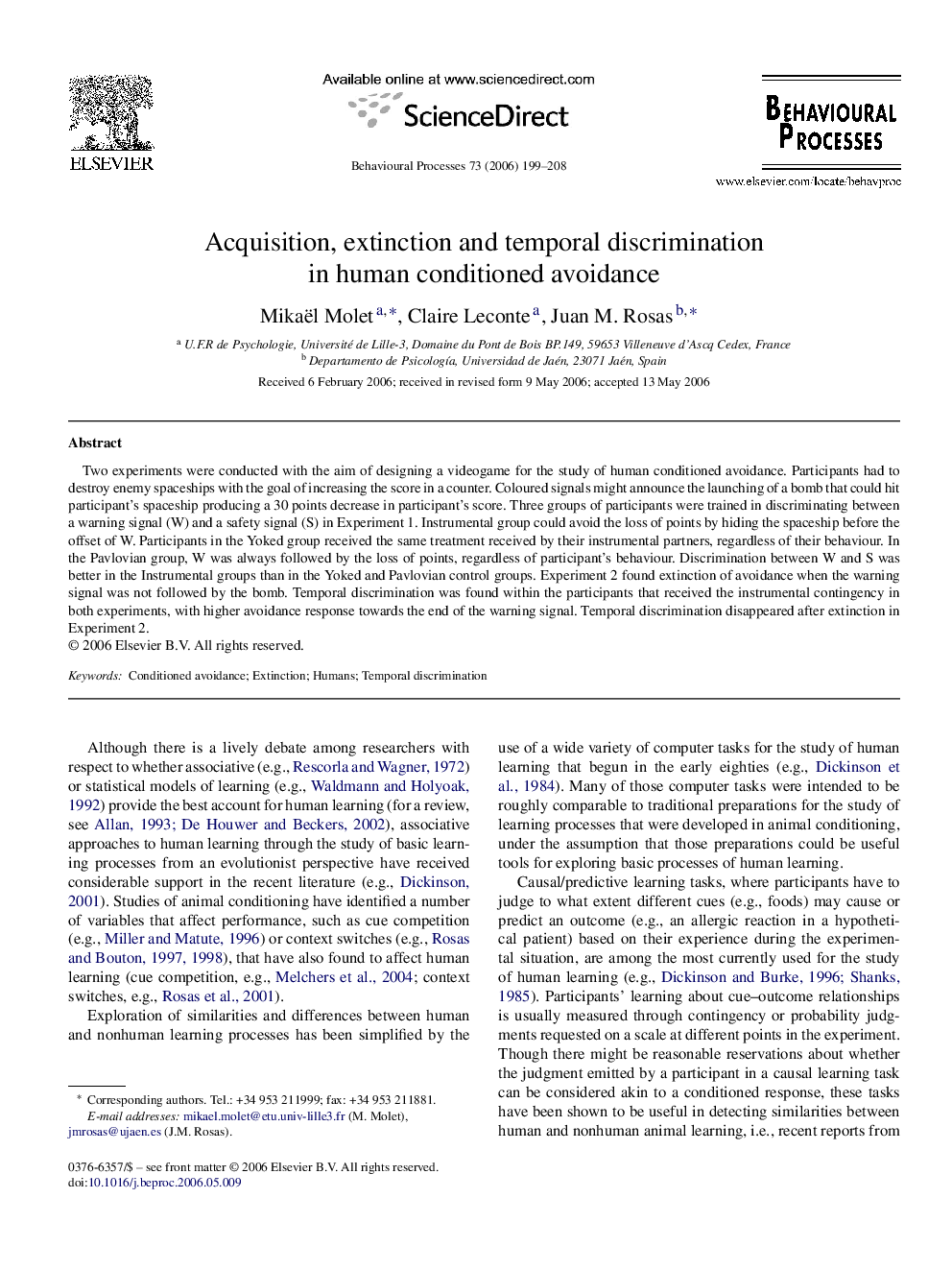| Article ID | Journal | Published Year | Pages | File Type |
|---|---|---|---|---|
| 2427724 | Behavioural Processes | 2006 | 10 Pages |
Two experiments were conducted with the aim of designing a videogame for the study of human conditioned avoidance. Participants had to destroy enemy spaceships with the goal of increasing the score in a counter. Coloured signals might announce the launching of a bomb that could hit participant's spaceship producing a 30 points decrease in participant's score. Three groups of participants were trained in discriminating between a warning signal (W) and a safety signal (S) in Experiment 1. Instrumental group could avoid the loss of points by hiding the spaceship before the offset of W. Participants in the Yoked group received the same treatment received by their instrumental partners, regardless of their behaviour. In the Pavlovian group, W was always followed by the loss of points, regardless of participant's behaviour. Discrimination between W and S was better in the Instrumental groups than in the Yoked and Pavlovian control groups. Experiment 2 found extinction of avoidance when the warning signal was not followed by the bomb. Temporal discrimination was found within the participants that received the instrumental contingency in both experiments, with higher avoidance response towards the end of the warning signal. Temporal discrimination disappeared after extinction in Experiment 2.
